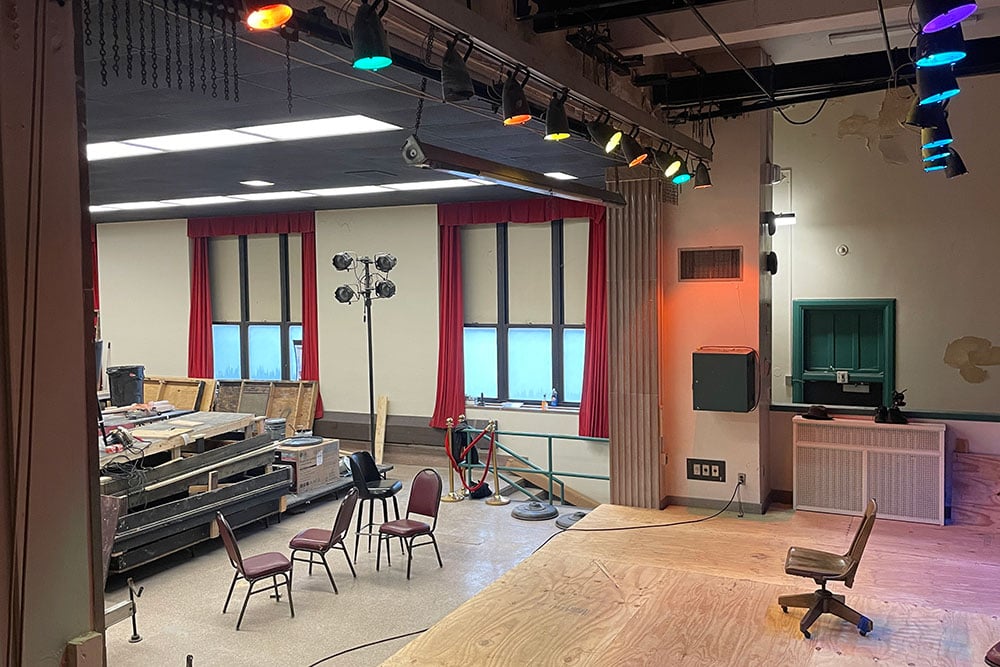Community, Leadership, Experimentation, Diversity, & Education
Pittsburgh Arts, Regional Theatre, New Work, Producing, Copyright, Labor Unions,
New Products, Coping Skills, J-O-Bs...
Theatre industry news, University & School of Drama Announcements, plus occasional course support for
Carnegie Mellon School of Drama Faculty, Staff, Students, and Alumni.
CMU School of Drama
Tuesday, March 07, 2023
How An Abandoned School Became The Main Stage For The Pittsburgh Playwrights Theatre
Pittsburgh Magazine: Mark Clayton Southers is fidgeting with a light fixture and taking last-minute phone calls as he prepares the Madison Arts Center for its first official show. It’s one week out from the curtains going up, and the former elementary school, located at 3401 Milwaukee St. in the Upper Hill District, is alive with buzz saws, dog barks and soft bossa nova music.
Subscribe to:
Post Comments (Atom)

2 comments:
I absolutely adore interesting and nontraditional theatre spaces. My high school theatre was in a building that started as a dairy farm and then a funeral home before becoming a small proscenium theatre. The character that a past is able to bring into a space creates an energy unlike any other for those working on a show and patrons alike. The story of how this space came to be is so exciting. I don’t know if an elementary school would've been the first on my list to turn into a theatre but I do think it makes complete sense. Of course, you would have to change any of the tiny things (like the tiny toilets) out for their adult-sized counterparts. Other than that I think it would be pretty straightforward. Most elementary schools already have an auditorium of some kind. I don’t think I want to own a theatre but I sure am excited for people who do, there are a lot of exciting spaces on the horizon.
This is absolutely SICK. It reminds me of those TikToks that are like “We converted this old school bus into a mobile home!!!!!”. I was looking at their season, and I saw “Pyramid Builders,” which is a dystopian story. That seems like a perfect choice to perform in this space. And because it’s set only nine years into the future, the space feels even more relevant - like modern locations can decay. In the video, it seemed like they were utilizing either a preexisting elementary school stage, or a specific alcove that resembled a proscenium. I think that can make some kind of statement that theatre can be restored in any place, and also that theatre spaces, no matter how defunct, can still produce art. I think another interesting challenge is housing the audience in this space. I feel like elementary classrooms tend to be larger, however, there’s no way those spaces can house a significant audience. Now, if they’re going for more intimate experiences, that’s probably fine. But in theory, they would have to do some hardcore wall-busting, and I feel like that may affect the authenticity of the space.
Post a Comment